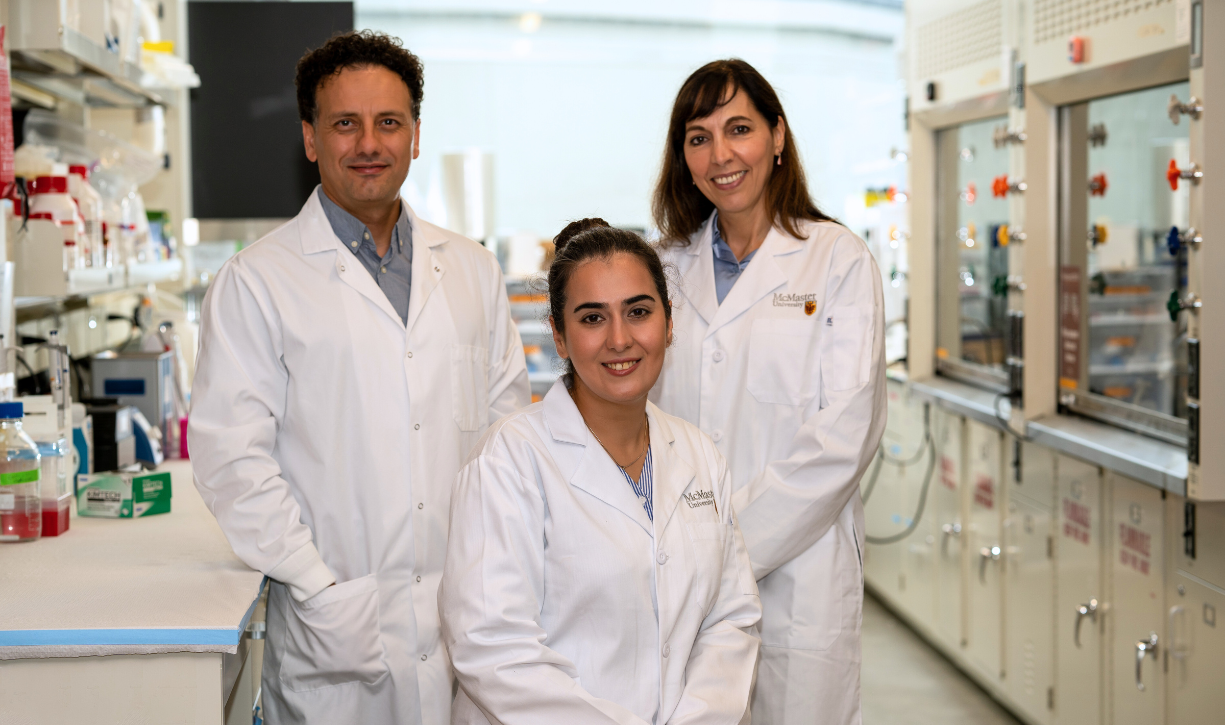Researchers crack a celiac mystery: Where does the gluten reaction begin?

From left, McMaster researchers Tohid Didar, Sara Rahmani and Elena Verdu are part of a team of medical and engineering researchers who have answered a crucial question about celiac disease, potentially bringing scientists closer to developing a treatment or cure.
BY Wade Hemsworth
August 9, 2024
People with celiac disease have to avoid gluten, a protein in wheat, rye and barley that can trigger painful symptoms in the gut, impede the absorption of nutrients and raise the risk of other serious long-term issues.
There is no treatment available for the autoimmune disorder, which affects about 1 per cent of the population. Its rate of occurrence has roughly doubled in the past 25 years.
An interdisciplinary team of medical and engineering researchers centred at McMaster, and including colleagues from the US, Australia, and Argentina, has spent six years working to unlock a significant piece of the puzzle in the search for a cure: How and where the gluten response begins.
It was previously thought that the inflammatory response to gluten occurred inside the gut wall and exclusively involved immune cells, but in a new paper published Friday in the journal Gastroenterology, researchers show there is more to the story.
They found that the inner lining of the upper intestine, called the “epithelium” —composed of a variety of cells that are not classically part of the immune system — also plays an active role in directing the inflammatory response to gluten.
Using microscopic biomaterials in the laboratory, the team created a biologically functioning model of the intestinal epithelium which allowed the researchers to isolate the effects of specific molecules in the epithelial cells of people with celiac disease.
The model allowed the researchers to generate and observe the reactions under controlled conditions, an option that is simply not available in extremely complex gut environments of living beings.
They were able to observe how the molecules alert immune cells to the presence of gluten, and to conclude definitively that the epithelium plays a crucial role in activating the immune system in celiac disease.
Such a mechanism had been postulated before, but was never proven. Answering this controversial question is expected to advance the development of new drugs.
“The only way we can treat celiac disease today is by fully eliminating gluten from the diet. This is difficult to do, and experts agree that a gluten-free diet is insufficient,” says Elena Verdu, a corresponding author on the paper who is a professor of gastroenterology and director of McMaster’s Farncombe Family Digestive Health Research Institute.
Precisely locating the spark of the immune response could stimulate research into drug delivery to inhibit this newly found role of the epithelium, using drugs already in clinical trials, Verdu says.
“This allowed us to narrow down the specific cause and effect and prove exactly whether and how the reaction takes place,” says Tohid Didar, a corresponding author on the paper and an associate professor at McMaster’s School of Biomedical Engineering, who holds the Canada Research Chair in Nano-biomaterials.
Another significant finding from the study is that after detecting gluten, the epithelium sends stronger signals to immune cells if pathogens are also present.
This means that in the future it may be possible to detect the pathogen in a person at risk of developing the disease, and inhibit the interactions with gluten and the gut epithelium to prevent the disease, says the paper’s lead author, Sara Rahmani, a PhD candidate in Verdu and Didar labs.
The study was supported by a project grant from Canadian Institutes of Health Research to Verdu, a Celiac Canada Dr. JA Campbell Young Investigator Award to Rahmani, and an NSERC Discovery Grant and Ontario Early Researcher Award to Didar.


